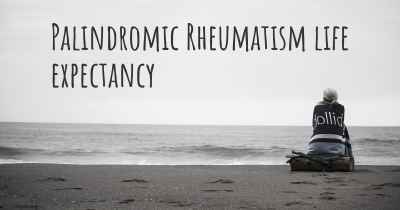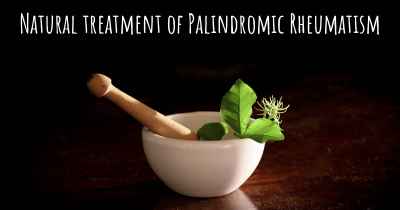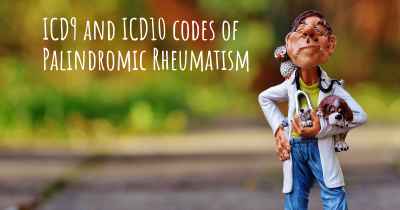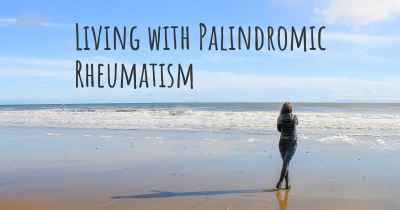Palindromic Rheumatism diet. Is there a diet which improves the quality of life of people with Palindromic Rheumatism?
Are you aware of a diet that can improve the quality of life of people with Palindromic Rheumatism? Is there a diet that is suggested to avoid when having Palindromic Rheumatism? See if there is a diet that can improve the quality of life of people with Palindromic Rheumatism, recommended and to avoid food when having Palindromic Rheumatism
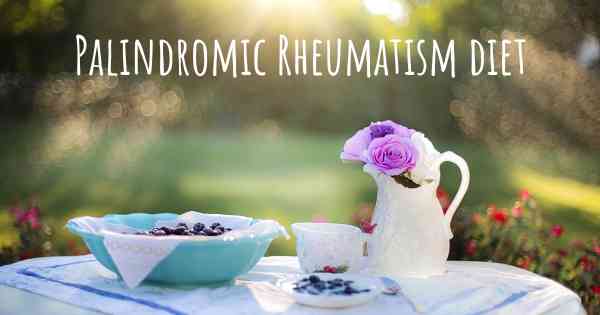
Palindromic Rheumatism Diet: Improving Quality of Life
Palindromic Rheumatism (PR) is a rare form of inflammatory arthritis characterized by recurrent episodes of joint pain, swelling, and stiffness. While there is no specific diet that can cure or completely alleviate the symptoms of PR, adopting a healthy and balanced diet can help improve the overall quality of life for individuals with this condition.
The Role of Diet in Palindromic Rheumatism
Although the exact cause of PR is unknown, it is believed to be an autoimmune condition where the body's immune system mistakenly attacks its own tissues. While diet alone cannot treat or prevent PR, certain foods and nutrients have been found to have anti-inflammatory properties, which may help reduce the frequency and severity of PR episodes.
Key Dietary Recommendations
While individual responses to specific foods may vary, incorporating the following dietary recommendations may help manage PR symptoms:
- Anti-inflammatory Foods: Include a variety of fruits, vegetables, whole grains, legumes, and healthy fats in your diet. These foods are rich in antioxidants and anti-inflammatory compounds, which can help reduce inflammation in the body.
- Fatty Fish: Omega-3 fatty acids found in fatty fish like salmon, mackerel, and sardines have been shown to have anti-inflammatory effects. Aim to include these fish in your diet at least twice a week.
- Turmeric: Curcumin, the active compound in turmeric, has potent anti-inflammatory properties. Consider adding turmeric to your meals or try turmeric supplements after consulting with your healthcare provider.
- Ginger: Ginger has been used for centuries for its anti-inflammatory properties. Incorporate fresh ginger into your cooking or enjoy it as a tea.
- Healthy Fats: Include sources of healthy fats such as avocados, olive oil, nuts, and seeds in your diet. These fats have been shown to have anti-inflammatory effects and can help support overall joint health.
- Colorful Fruits and Vegetables: Opt for a wide variety of colorful fruits and vegetables as they are rich in antioxidants and phytochemicals that can help reduce inflammation and support overall health.
- Limit Processed Foods: Processed foods, high in refined sugars, unhealthy fats, and additives, can promote inflammation in the body. Limiting their consumption can be beneficial for managing PR symptoms.
- Hydration: Staying well-hydrated is important for overall health and joint function. Aim to drink an adequate amount of water throughout the day.
Individualized Approach
It is important to note that while these dietary recommendations may be beneficial for many individuals with PR, each person's response to specific foods can vary. Keeping a food diary and monitoring your symptoms can help identify any potential triggers or foods that worsen your symptoms. Consulting with a registered dietitian who specializes in autoimmune conditions can provide personalized guidance and support in developing an individualized diet plan.
Other Lifestyle Factors
In addition to adopting a healthy diet, other lifestyle factors can also contribute to managing PR symptoms:
- Regular Exercise: Engaging in regular physical activity can help improve joint flexibility, reduce inflammation, and enhance overall well-being. Consult with your healthcare provider to determine the most suitable exercise routine for your condition.
- Stress Management: Stress can trigger or worsen PR symptoms. Incorporating stress management techniques such as meditation, deep breathing exercises, or engaging in activities you enjoy can help reduce stress levels.
- Adequate Rest: Getting enough rest and quality sleep is essential for managing PR symptoms. Ensure you have a comfortable sleep environment and establish a regular sleep routine.
- Medication and Treatment: Follow your healthcare provider's prescribed treatment plan, which may include medications to manage symptoms and prevent joint damage. Regular check-ups and communication with your healthcare team are crucial for optimal management of PR.
Conclusion
While there is no specific diet that can cure Palindromic Rheumatism, adopting a healthy and balanced diet, rich in anti-inflammatory foods, can help improve the overall quality of life for individuals with this condition. It is important to remember that each person's response to specific foods may vary, and consulting with a healthcare provider or registered dietitian can provide personalized guidance. Additionally, incorporating other lifestyle factors such as regular exercise, stress management, and adequate rest can further contribute to managing PR symptoms and enhancing overall well-being.
Posted Sep 6, 2017 by Sarah 1150
Your doctor may suggest trying the Autoimmune Protocol diet (AIP), which is a diet specifically designed to identify foods that trigger your systems. Again, not everyone is triggered by foods, but since the immune system is linked to gut health some people do find success in this. The key thing with the AIP is that it is meant to be used as a tool to isolate and then reintroduce foods slowly into your diet to identify things that trigger your condition. Upon completion of the reintroduction phase, you can then avoid your triggers but otherwise resume a normal diet. While some people prefer to stick to a strict elimination AIP, that is not the ultimate goal of this diet.
If you prefer a more general avoidance list, many people say to just avoid inflammatory foods, which include processed meats, sugars, and refined carbs, and to eat anti-inflammatory foods such as leafy greens, nuts, fruits, and fatty fish.
Ultimately, you're going to need to experiment a bit to see what works for your body and helps avoid your flares.
Posted Dec 1, 2019 by MaddOryxite 3570
